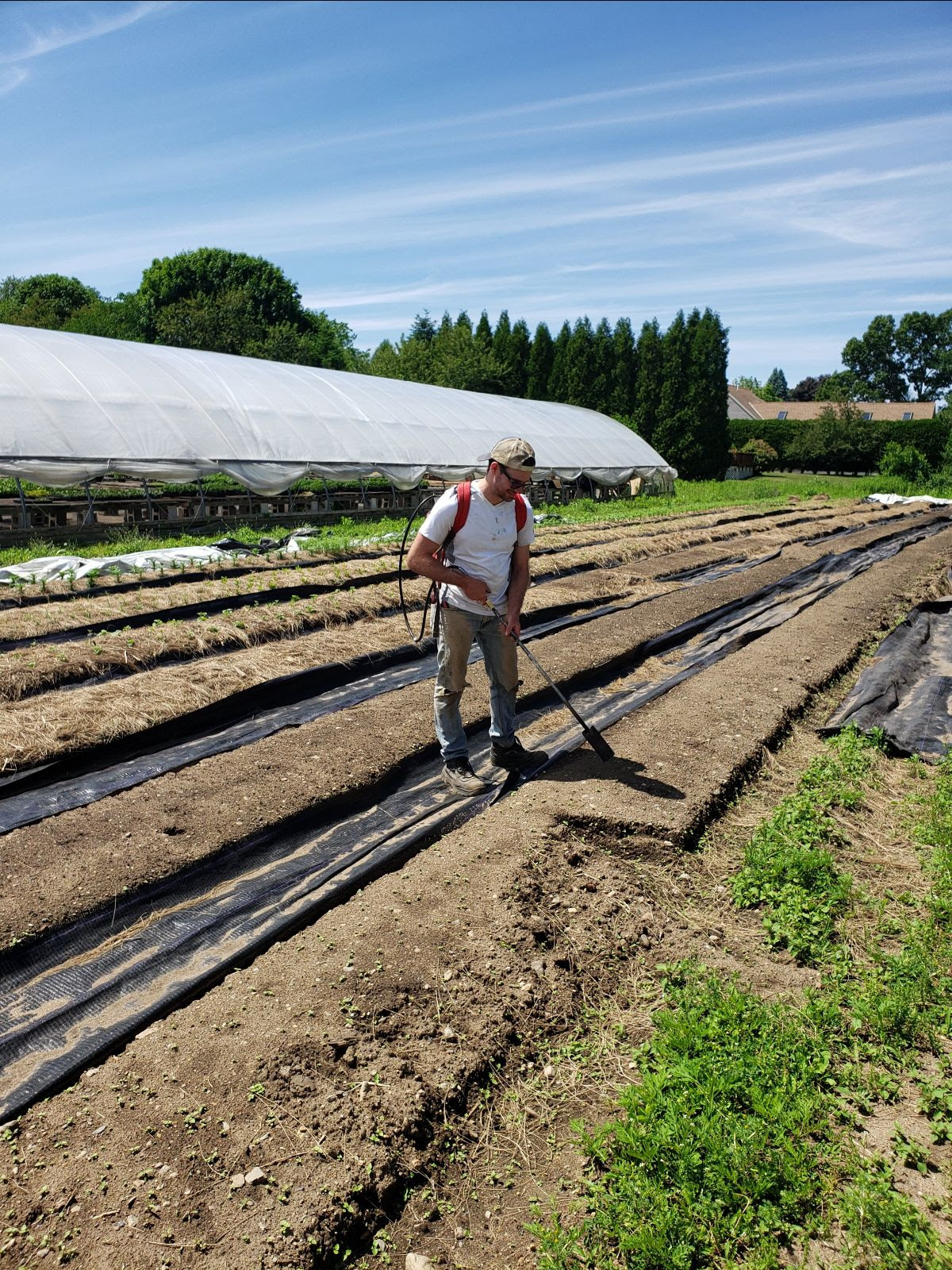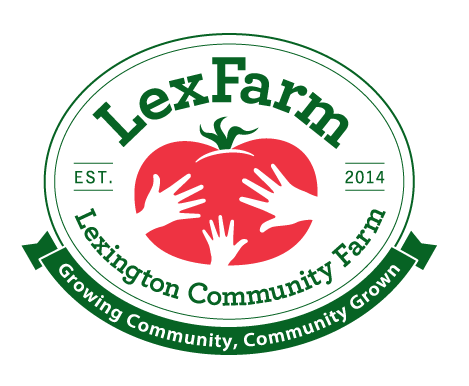Notes from the Field : Week 2

We’re transitioning to mid-season here at LexFarm.
Seeding in the greenhouse is slowing down. We still have a fair amount of transplanting to do, but we’re about to turn a corner on that as well.
Weeds are coming in hot and will only grow faster as July begins in a couple of weeks.
We’ve only started harvesting, and harvests will increase in length and weight as mid-summer crops start up (think zucchini, eggplant and tomatoes).
There is never a shortage of other farm tasks to accomplish either; be it pea training, tomato pruning, staking and tying, or mulch laying (salt marsh hay, black plastic or landscape fabric).
We use mulches to control weeds and water loss. Each of the types of mulch have their own advantages.
Salt marsh hay is biodegradable and improves the soil as it breaks down. It doesn’t hold as much heat in as black plastic mulch, so we use it for things that don’t need extra warmth in the soil. It also isn’t a foolproof weed barrier, is costly and labor intensive to apply.
Black plastic mulch helps increase soil temperatures for those crops that need a boost (nightshades ie. tomatoes, peppers, eggplant etc.). Unfortunately, there is no organic approved biodegradable plastic mulch yet. At the end of the season, we pull it up and send it to the landfill. I’m hopeful that someone comes up with an organic solution to this problem soon.
We use landscape fabric in the aisles of most of our PYO crops to keep pathways easier to navigate. This material is heavy duty and reusable. It allows for water to get through into the soil beneath.
We’re glad to have an arsenal of mulching options at our disposal. These tools help us cut down on the amount of weeding we need to do throughout the season and able to get more down with the time we have.



